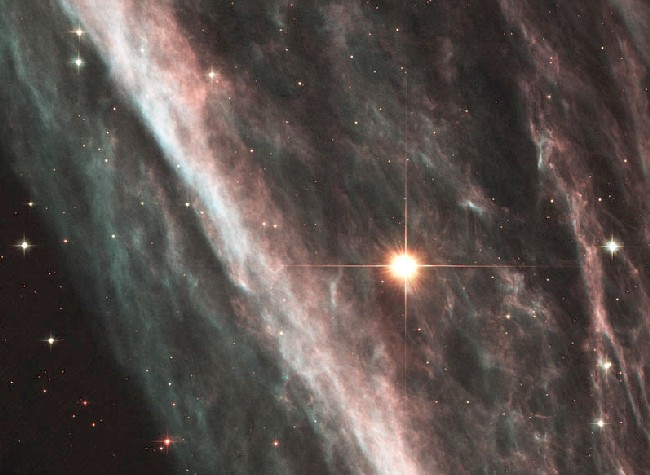Credit & Copyright: Hubble
Heritage Team
(STScI/AURA),
W. Blair
(JHU) &
D. Malin
(David Malin Images),
NASA
Explanation:
At 500,000 kilometers per hour, a
supernova
shockwave plows through interstellar space.
This shockwave is known as the
Pencil Nebula, or NGC 2736, and is part of the
Vela supernova remnant,
an expanding shell of a star that exploded about
11,000 years ago.
Initially the shockwave was moving at millions of kilometers
per hour, but the weight of all the gas it has
swept up has slowed it considerably.
Pictured above, the
shockwave moves from left to right,
as can be discerned by the lack of gas on the left.
The above region spans nearly a
light year across, a
small part of the 100+ light-year span of the entire
Vela supernova remnant.
The Hubble Space Telscope
ACS captured the
above image last October.
1999 2000 2001 2002 2003 2004 2005 2006 2007 2008 2009 2010 2011 2012 2013 2014 2015 2016 2017 2018 2019 2020 2021 2022 2023 2024 2025 |
Yanvar' Fevral' Mart Aprel' Mai Iyun' Iyul' Avgust Sentyabr' Oktyabr' Noyabr' Dekabr' |
NASA Web Site Statements, Warnings, and Disclaimers
NASA Official: Jay Norris. Specific rights apply.
A service of: LHEA at NASA / GSFC
& Michigan Tech. U.
|
Publikacii s klyuchevymi slovami:
Pencil Nebula - supernova - shock wave - tumannost' - Sverhnovye - udarnye volny - tumannost' Karandash
Publikacii so slovami: Pencil Nebula - supernova - shock wave - tumannost' - Sverhnovye - udarnye volny - tumannost' Karandash | |
Sm. takzhe:
Vse publikacii na tu zhe temu >> | |
